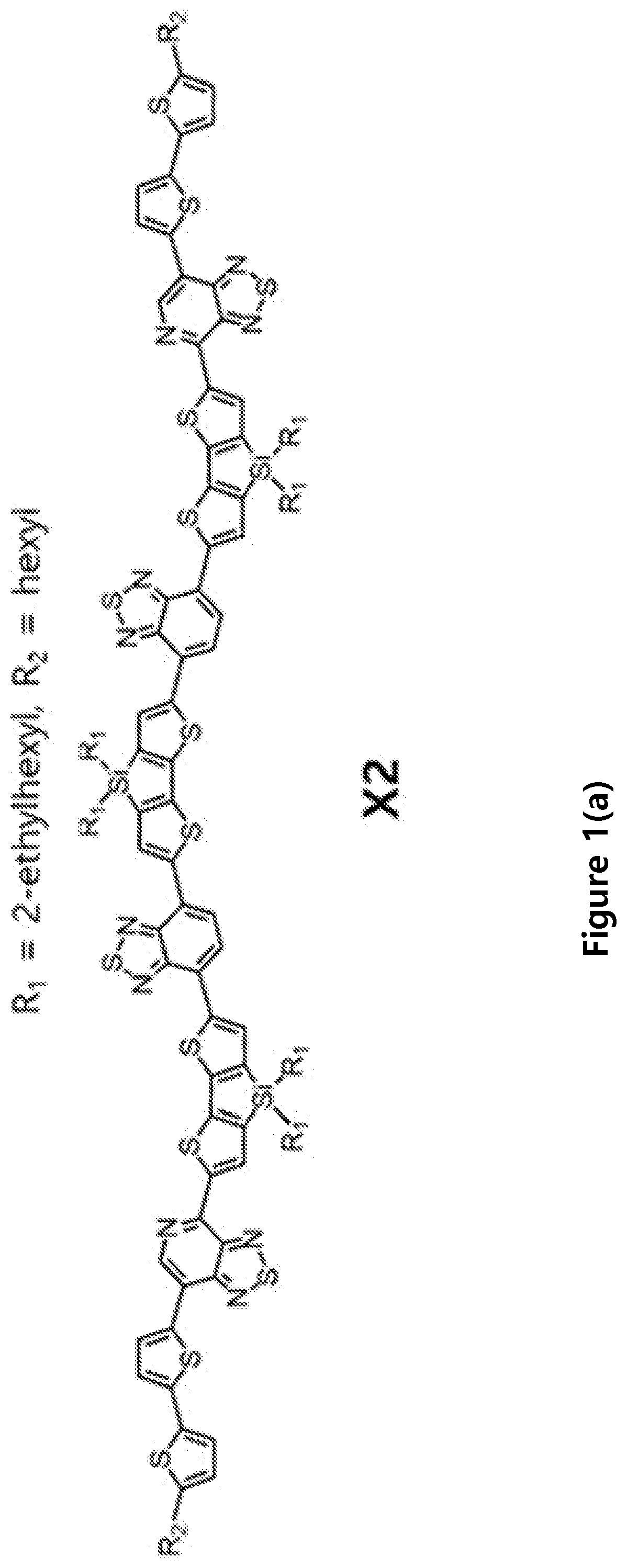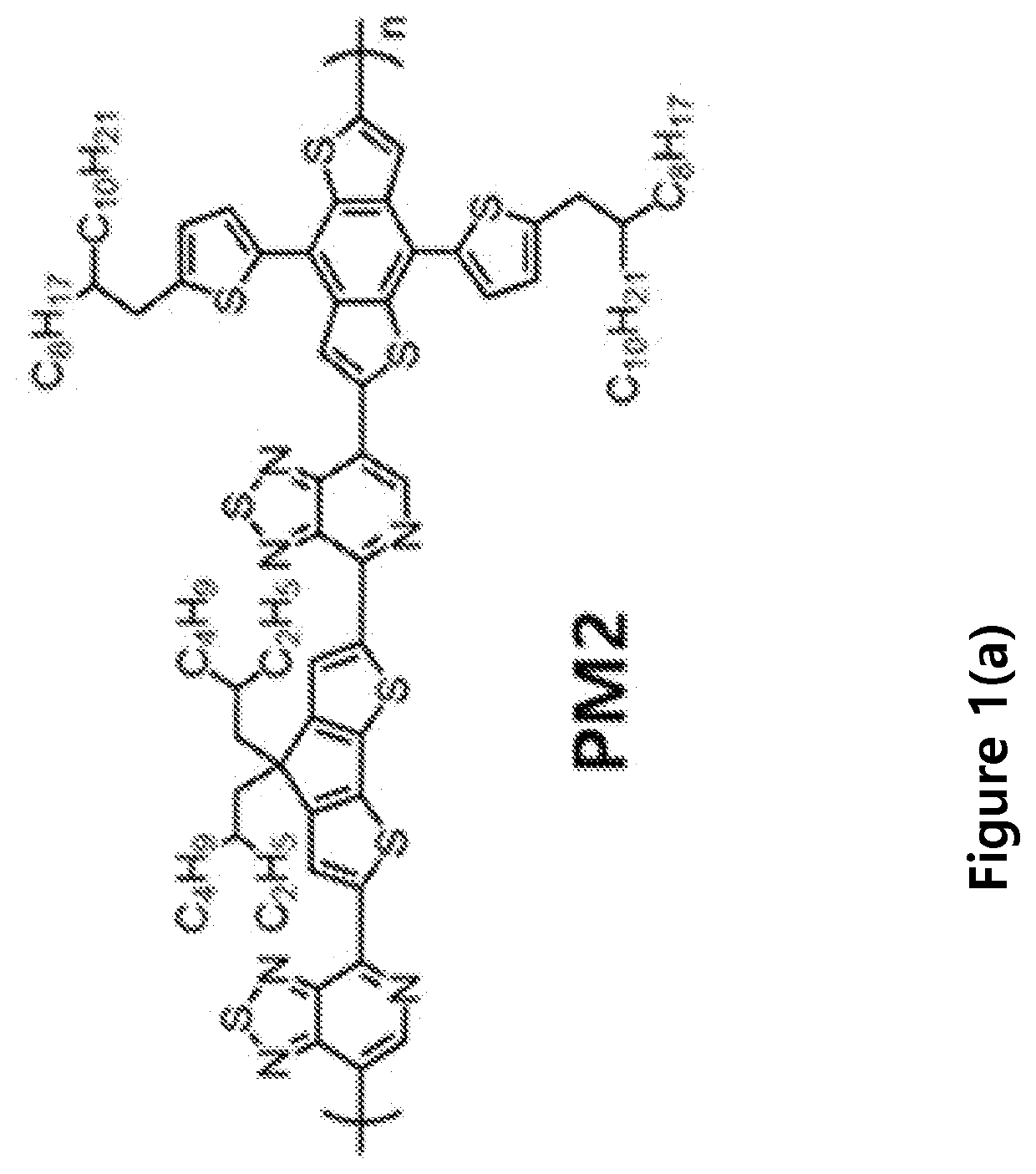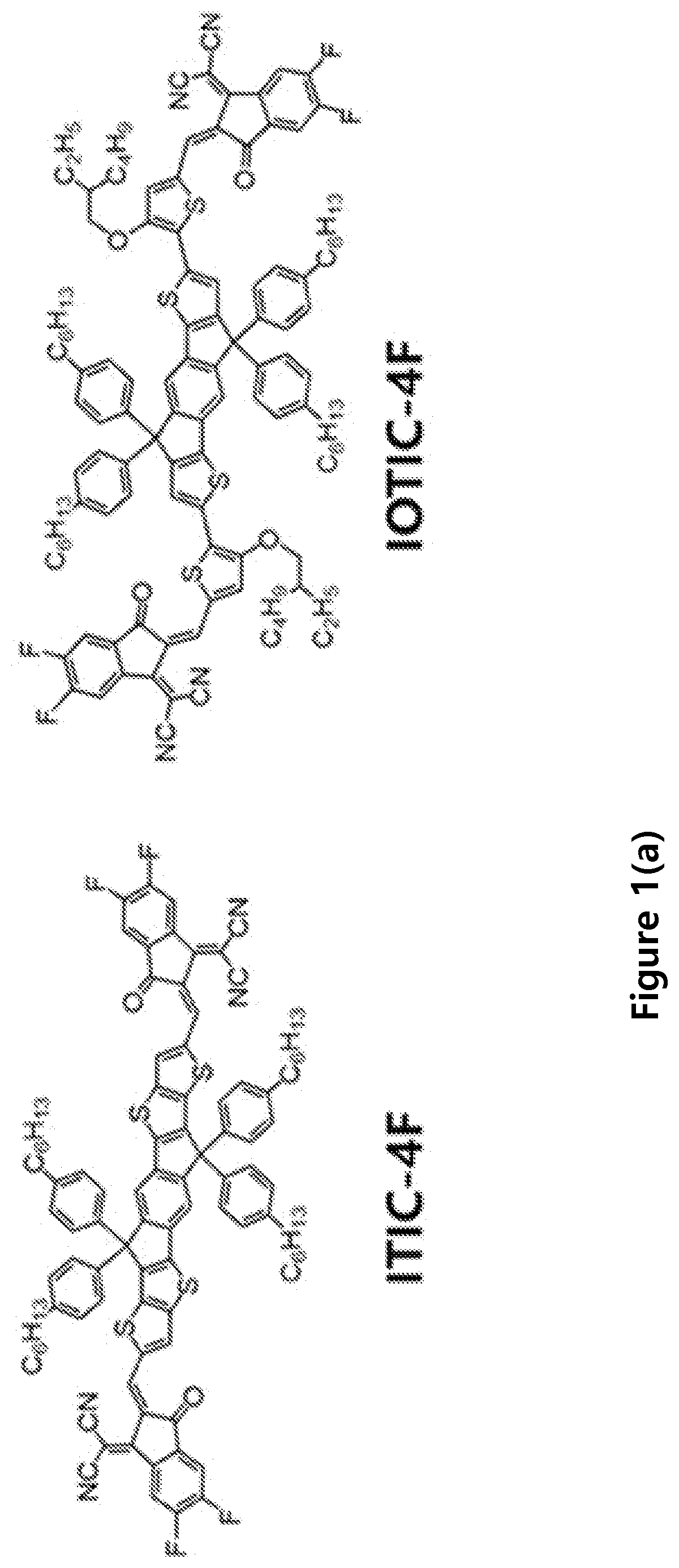Compositions and methods of fabrication of near infrared devices
a near infrared device and fabrication method technology, applied in the field of organic devices, can solve the problems of low external quantum efficiency, charge recombination, poor carrier generation and extraction, etc., and achieve the effects of improving the performance of organic solar cells, enhancing current density, and improving opv performan
- Summary
- Abstract
- Description
- Claims
- Application Information
AI Technical Summary
Benefits of technology
Problems solved by technology
Method used
Image
Examples
first example
REFERENCES FOR FIRST EXAMPLE
[0487]The following references are incorporated by reference herein[0488]1. Yang (Michael) Yang, Wei Chen, Letian Dou, Wei-Hsuan Chang, Hsin-Sheng Duan, Brion Bob, Gang Li and Yang, Nature Photonics, 2015, 9, 190-198[0489]2. Seyeong Song, Kang Taek Lee, Chang Woo Koh, Hyebeom Shin, Mei Gao, Han Young Woo, Doojin Vak and Jin Young Kim, Energy Environ. Sci., 2018, 11, 3248-3255[0490]3. Ram Prakash Singh, Omkar Singh Kushwaha, Macromol. Symp. 2013, 327, 128-149[0491]4. P. R. Berger and M. Kim, J. Renewable Sustainable Energy, 2018, 10, 013508[0492]5. Yankang Yang, Zhi-Guo Zhang, Haijun Bin, Shanshan Chen, Liang Gao, Lingwei Xue, Changduk Yang, and Yongfang Li, J. Am. Chem. Soc. 2016, 138, 15011-15018[0493]6. Yuze Lin, Jiayu Wang, Zhi-Guo Zhang, Huitao Bai, Yongfang Li, Daoben Zhu, and Xiaowei Zhan, Adv Mater. 2015, 27, 1170-1174[0494]7. Xin Song, Nicola Gasparini, Long Ye, Huifeng Yao, Jianhui Hou, Harald Ade, and Derya Baran, ACS Energy Lett. 2018, 3, 669-6...
second example
REFERENCES FOR SECOND EXAMPLE
PUM
| Property | Measurement | Unit |
|---|---|---|
| responsivity | aaaaa | aaaaa |
| wavelengths | aaaaa | aaaaa |
| responsivity | aaaaa | aaaaa |
Abstract
Description
Claims
Application Information
 Login to View More
Login to View More - R&D
- Intellectual Property
- Life Sciences
- Materials
- Tech Scout
- Unparalleled Data Quality
- Higher Quality Content
- 60% Fewer Hallucinations
Browse by: Latest US Patents, China's latest patents, Technical Efficacy Thesaurus, Application Domain, Technology Topic, Popular Technical Reports.
© 2025 PatSnap. All rights reserved.Legal|Privacy policy|Modern Slavery Act Transparency Statement|Sitemap|About US| Contact US: help@patsnap.com



